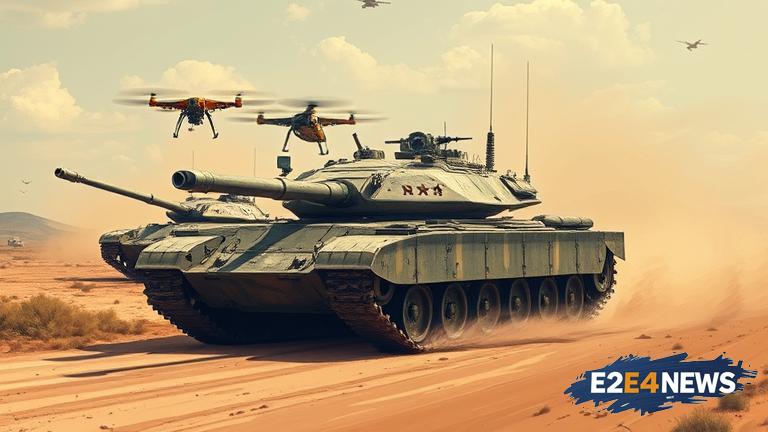The era of modern warfare has witnessed a significant shift in the balance of power, with the advent of low-cost military drones that have been successfully deployed to take down high-tech tanks. These drones, which are relatively inexpensive compared to their tank counterparts, have been equipped with advanced technology that enables them to navigate and strike with precision. The use of drones in combat has been a subject of interest for military strategists and analysts, who have been studying their effectiveness in various conflict zones. Recent reports have highlighted the success of these drones in taking down multi-million dollar tanks, which has raised questions about the viability of traditional armored vehicles in modern warfare. The drones, which are often equipped with advanced sensors and GPS technology, are able to gather intelligence and strike at enemy positions with ease. They are also highly maneuverable, making them difficult to detect and intercept. The low cost of these drones has made them an attractive option for militaries around the world, who are looking to upgrade their capabilities without breaking the bank. The use of drones has also raised concerns about the potential for civilian casualties, as they are often deployed in populated areas. Despite these concerns, the effectiveness of drones in combat has been undeniable, and they are likely to play an increasingly important role in future conflicts. The development of drone technology has been rapid, with new advancements being made regularly. The use of artificial intelligence and machine learning algorithms has enabled drones to become even more sophisticated, allowing them to make decisions in real-time and adapt to changing circumstances. The deployment of drones has also changed the way that militaries approach combat, with a greater emphasis being placed on asymmetric warfare. This approach, which involves using unconventional tactics to exploit the weaknesses of enemy forces, has been highly effective in recent conflicts. The use of drones has also enabled militaries to gather intelligence and conduct reconnaissance missions with greater ease, allowing them to make more informed decisions about troop deployments and tactical operations. The impact of drones on modern warfare has been significant, and their use is likely to continue to grow in the coming years. As technology continues to evolve, it is likely that drones will become even more advanced, with new capabilities being developed regularly. The potential for drones to be used in a variety of contexts, from combat to humanitarian missions, is vast, and their impact is likely to be felt for years to come. The development of drone technology has been a global effort, with countries around the world contributing to advancements in the field. The use of drones has also raised questions about the potential for autonomous warfare, where machines are able to make decisions without human intervention. While this technology is still in its infancy, it has the potential to revolutionize the way that wars are fought, and could have significant implications for international relations and global security. The deployment of drones has also changed the way that militaries approach logistics and supply chain management, with a greater emphasis being placed on rapid deployment and flexibility. The use of drones has also enabled militaries to respond quickly to changing circumstances, allowing them to adapt to new threats and challenges. The impact of drones on modern warfare has been profound, and their use is likely to continue to shape the course of conflicts for years to come.
